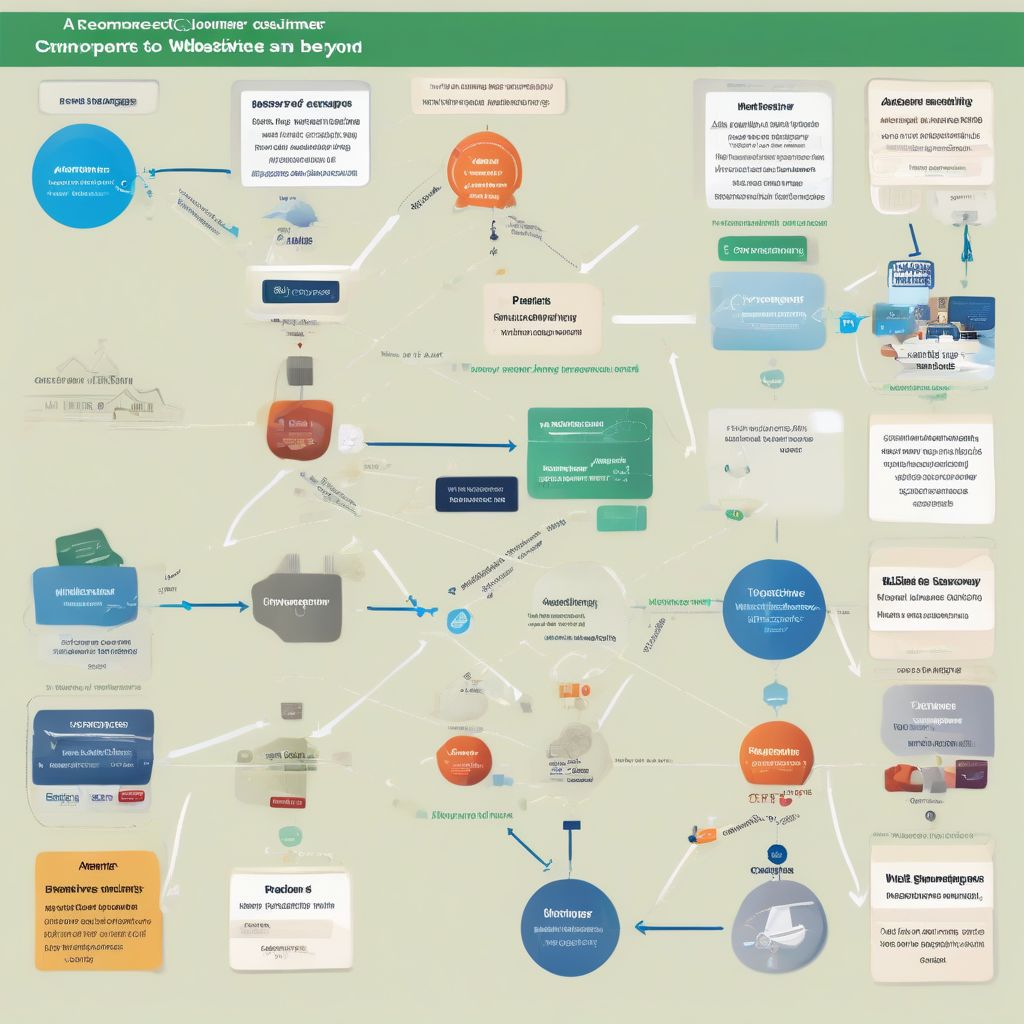Imagine this: you’re browsing online for a new blender, and you stumble upon two websites. The first one has a cluttered layout, confusing navigation, and zero product reviews. The second one? It boasts high-quality images, detailed product descriptions, glowing testimonials, and a seamless checkout process. Which one are you more likely to buy from?
The answer is obvious, right?
In today’s cutthroat ecommerce landscape, a stellar customer experience is no longer a nice-to-have – it’s the key to unlocking sales, fostering loyalty, and outshining the competition.
Why Customer Experience Reigns Supreme in Ecommerce
Think of the last time you had an exceptional dining experience. The food was delicious, the ambiance inviting, and the service impeccable. You probably told your friends about it, right? That’s the power of a positive experience – it turns satisfied customers into brand advocates.
The same principle applies to the online world. When customers enjoy their interactions with your ecommerce store, they’re more likely to:
- Make a purchase: A smooth, enjoyable experience removes friction from the buying process, increasing conversion rates.
- Spend more: Studies show that customers who have a positive experience are willing to spend more on average.
- Become loyal customers: A great experience builds trust and encourages repeat business.
- Spread the word: Happy customers become brand ambassadors, recommending your store to their network.
The Building Blocks of an Exceptional Ecommerce Customer Experience
So, how do you craft an online experience that delights your customers and fuels sales? It boils down to these key elements:
1. User-Friendly Website Design and Navigation:
Your website is your storefront, and first impressions matter. A cluttered layout, confusing navigation, or slow loading times can send potential customers running for the hills.
- Prioritize intuitive navigation: Make it easy for customers to find what they’re looking for with clear menus, categories, and a search bar.
- Optimize page speed: Ensure your site loads quickly, as even a few seconds’ delay can lead to abandoned carts.
- Mobile responsiveness is a must: More people than ever shop on their smartphones, so a seamless mobile experience is non-negotiable.
2. Compelling Product Presentation:
Online shoppers rely heavily on visuals and detailed information to make informed decisions.
- High-quality product images: Showcase your products from multiple angles, using zoom features and lifestyle shots to provide context.
- Detailed and engaging descriptions: Highlight key features, benefits, and use cases in a clear and concise manner.
- Customer reviews and ratings: Build trust and social proof by prominently featuring authentic reviews from previous buyers.
3. Seamless Checkout Process:
A complicated or lengthy checkout process is a surefire way to increase cart abandonment rates.
- Offer multiple payment options: Cater to diverse preferences with popular payment gateways and digital wallets.
- Minimize form fields: Only ask for essential information to avoid overwhelming customers.
- Provide clear shipping information: Be transparent about shipping costs, delivery times, and return policies.
4. Proactive Customer Service:
Even with the smoothest online experience, questions or issues may arise. How you handle these interactions can make or break customer loyalty.
- Offer multiple contact channels: Provide options like email, phone, or live chat for convenient support.
- Respond promptly and efficiently: Timely resolutions show customers you value their time and business.
- Go the extra mile: Surprise and delight customers with personalized touches or unexpected gestures.
 Ecommerce Customer Journey
Ecommerce Customer Journey
5. Post-Purchase Engagement:
The customer journey doesn’t end at the checkout. Nurturing the relationship after a purchase is crucial for building lasting loyalty.
- Order confirmation and tracking: Keep customers informed about the status of their purchase with timely updates.
- Personalized recommendations: Suggest relevant products based on their browsing history or purchase history.
- Loyalty programs and exclusive offers: Reward repeat customers with exclusive perks, discounts, or early access to sales.
Measuring Success: Key Metrics for Customer Experience
To continuously improve your ecommerce customer experience, you need to track and analyze key performance indicators (KPIs). Here are a few metrics to keep a close eye on:
- Conversion rate: Track the percentage of website visitors who make a purchase.
- Average order value (AOV): Monitor the average amount customers spend per transaction.
- Customer lifetime value (CLTV): Calculate the projected revenue a customer will generate throughout their relationship with your business.
- Net Promoter Score (NPS): Gauge customer loyalty and satisfaction with a simple survey that asks how likely they are to recommend your store.
- Cart abandonment rate: Analyze the percentage of customers who add items to their cart but don’t complete the purchase.
[amazon bestseller=”ecommerce customer experience”]
Turning Insights into Action: Optimizing Your Strategy
The beauty of tracking these metrics is that they provide valuable data to inform your optimization efforts. Use this information to:
- Identify and address pain points: Are customers abandoning their carts at a specific stage of the checkout process? Is your website’s navigation confusing?
- Test and iterate: Experiment with different website layouts, product descriptions, or marketing messages to see what resonates best with your target audience.
- Personalize the experience: Use customer data to tailor product recommendations, promotions, or email campaigns.
Conclusion
In the ever-evolving world of ecommerce, prioritizing the customer experience is no longer optional—it’s an imperative. By creating a seamless, enjoyable, and customer-centric online journey, you can unlock higher sales, foster lasting loyalty, and differentiate your brand in a crowded marketplace.
Remember, building an exceptional customer experience is an ongoing process. Continuously listen to your customers, analyze their behavior, and adapt your strategies to meet their ever-changing needs and expectations.
Now, we’d love to hear from you! Share your thoughts on the importance of customer experience in the comments below. What are some of your favorite ecommerce brands and what makes their customer experience so memorable?
